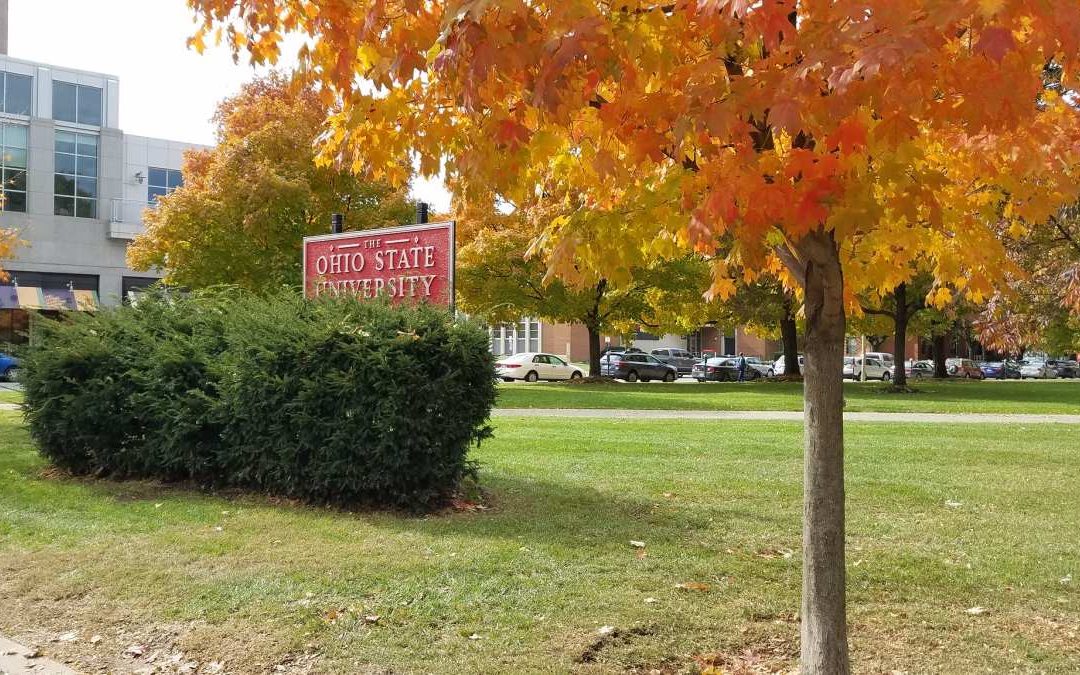Don’t wait until the last minute to start your outdoor winter prepping. Fall weekends can get awfully busy, but there’s no doubt certain outdoor activities shouldn’t be put on the back burner. Make it a priority to check these tasks off your fall lawn care checklist for Columbus and you will have a healthier and more beautiful lawn come spring.
In this article, we’ll go over:
- Why is Lawn Care Important in the Fall?
- Fall Lawn Care Checklist for Columbus
- FAQ About Fall Lawn Care in Columbus
Why is Lawn Care Important in the Fall?
The cool autumn weather is a great opportunity to fertilize your lawn, control weeds, and improve the overall health and appearance of your Columbus yard. With some effort on your part now, you’ll have a green, healthy carpet by the time spring rolls around.
- Performing yard cleanup in the fall can help eliminate potential hiding places for pests and disease-causing organisms.
- Aerating your lawn in the fall ensures that the soil has better air and water circulation, which helps prevent diseases like snow mold.
- Performing a soil test lets you know the health of your soil and if your lawn needs specific nutrients to help it survive through the winter.
- By applying pre-emergent and post-emergent herbicides in the fall, you can knock out weeds and prevent them from sprouting in spring.
- Overseeding helps fill in bare patches and create a denser, more robust lawn.
Fall Lawn Care Checklist for Columbus
1. Clean Up Leaves
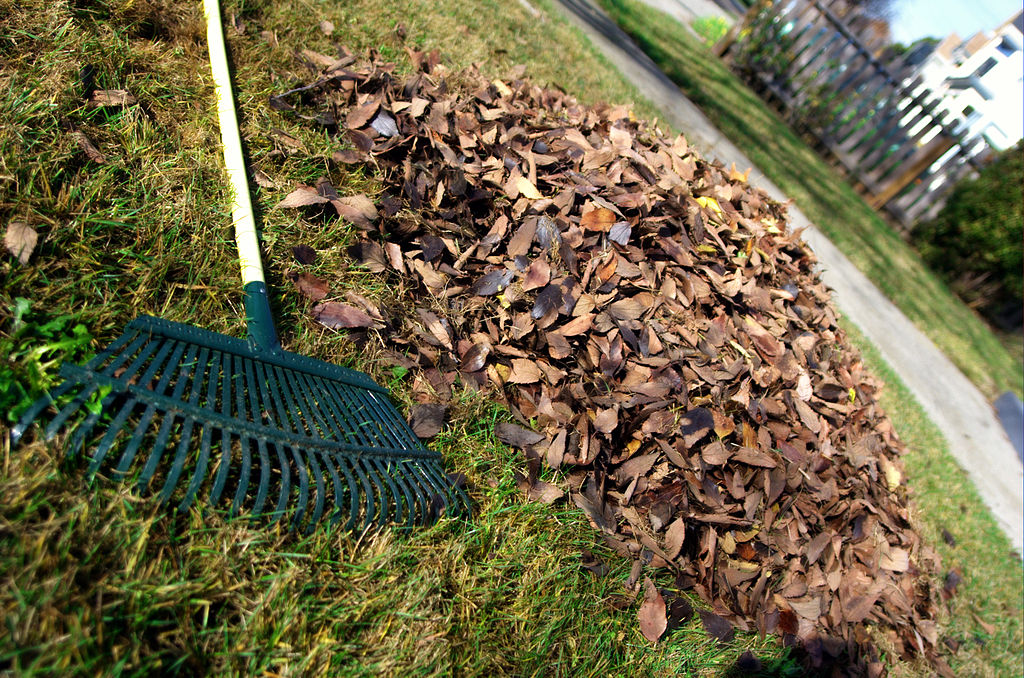
Photo Credit: David Goehring / Wikimedia Commons / CC BY 2.0
Ever notice how getting leaves off your lawn immediately boosts your home’s curb appeal? But there’s more to raking leaves than aesthetics.
- While leaves are not always detrimental to your grass and can even act as a natural fertilizer that enhances growth, large piles left to decompose can develop fungal growth that could cause health issues.
- These leaves can block sunlight and trap moisture, creating the perfect breeding ground for lawn diseases that can damage grasses.
- Leaves left on the ground can also reduce the oxygen absorption of your grass.
- They can provide a cozy habitat for pests such as mice and other rodents.
You can mulch them in your yard to provide some organic nutrients for your soil, but don’t build a thick layer as it can interfere with lawn care treatments and block sunlight. Alternatively, you can gather them up and add them to your compost.
2. Water Until the Ground Freezes
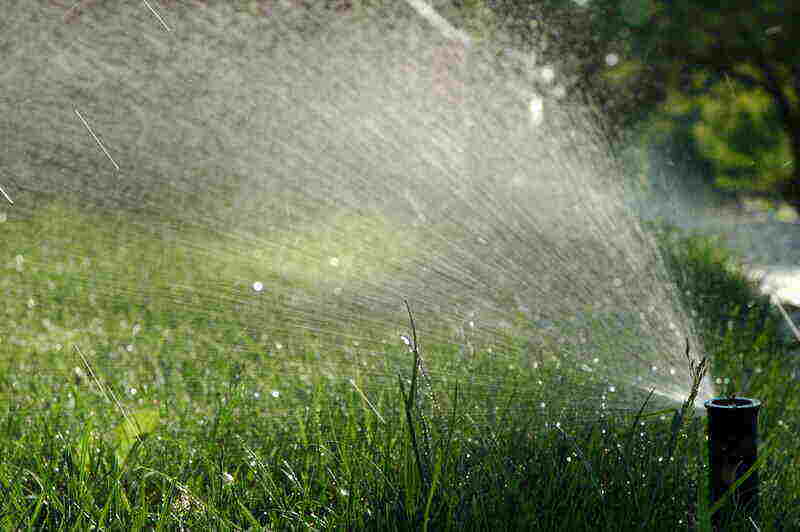
Photo Credit: UBC Micrometeorology / Flickr / CC BY 2.0
Columbus residents generally plant cool-season grasses that grow most vigorously in spring and fall. Careful watering in the fall will lead to healthy growth, strong roots, and a good fighting chance for your grass in winter.
Water your lawn until the first freeze approaches, around October. Cool-season grass needs around 1 inch of water per week, which includes rainfall. Let your lawn guide you and watch for signs of overwatering, such as:
- Insect infestation
- Fungus discoloration
- Thatch or weed growth
- A lawn that feels squishy when you step on it
- Streams of water running off your grass
Underwatering is bad for your lawn as well. A lack of regular watering will result in:
- Your turf looking dry and unhealthy.
- Your grass turning gray or tan.
- Imprints left behind on your grass when stepping on it.
As a rule of thumb, try to follow these watering guidelines:
- Water your lawn before 10 a.m., preferably between 6-8 a.m. Your grass will be able to absorb the moisture before it evaporates.
- In the afternoon, water between 4-6 p.m. Watering late at night will make your lawn more susceptible to disease, as the moisture will simply sit on your grass overnight.
- Water deeply, but more infrequently, for stronger root development and drought-resistance.
3. Dethatch, If Necessary
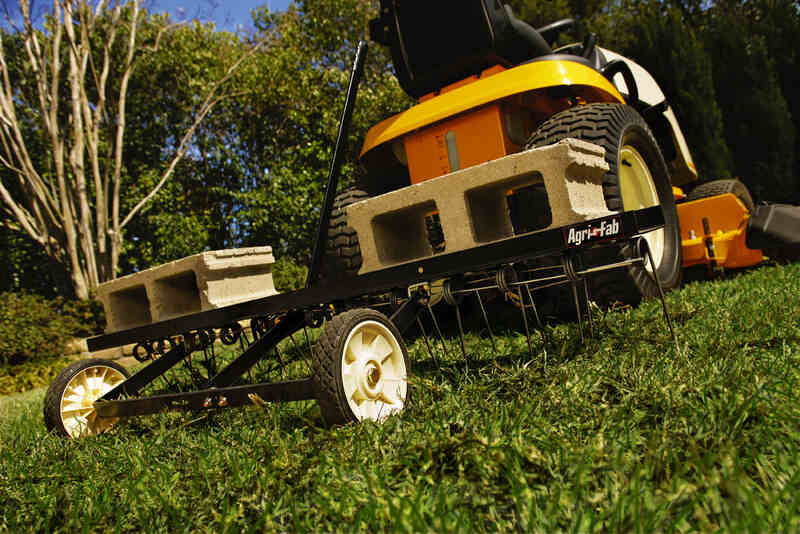
Photo Credit: Agri-Fab, Inc. / Wikimedia Commons / CC0
Dethatching is the removal of excess thatch (grass clippings, leaves, dead grass, and other organic matter) from your lawn.
Dethatching is recommended for lawns that are dry, less dense, and unhealthy. It allows nutrients, air, and water to better reach the soil. Not to mention that it keeps pests at bay, which is always a plus.
The best time to dethatch cool-season grasses such as Kentucky bluegrass, ryegrass, and fescue is late August or early September. With proper lawn maintenance, dethatching only needs to be done once every few years.
How to tell if you need to dethatch:
- The ground looks spongy
- Your grass blades appear weak
- Your turf is sparse and has dry spots
- Weeds are popping up everywhere
- Your grass is no longer a vibrant green
- Insects and diseases are setting up shop
How to dethatch your lawn:
- Before dethatching, cut your grass to half its normal height and don’t fertilize.
- Insert the tines of a dethatching rake into the thatch and pull upward to loosen and remove buildup. You should clearly see the thatch separating from the soil.
- Use a dethatching rake for a smaller lawn or a dethatcher (also known as a verticutter or power rake) for a larger yard.
- Once you’re finished, use a leaf rake to get rid of the thatch you loosened up.
4. Aerate to Help Your Lawn Breathe
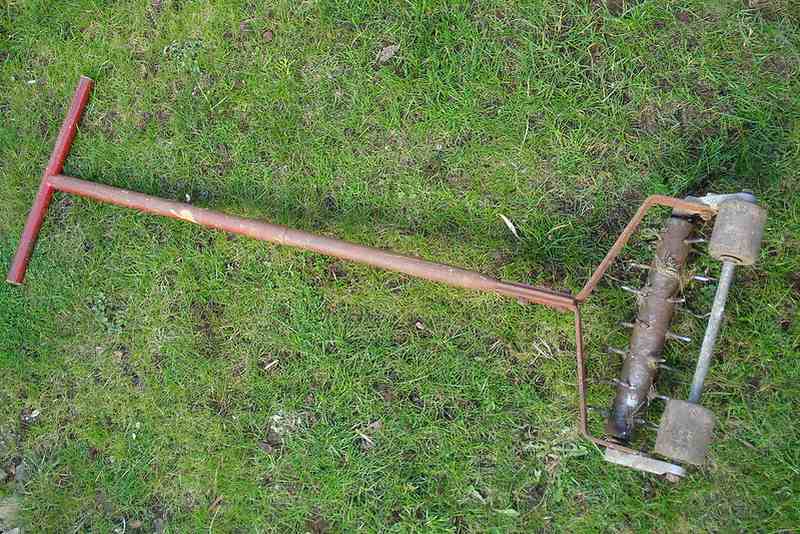
Photo Credit: allispossible.org.uk / Flickr / CC BY 2.0
If you dream of a lush lawn, you can’t overlook aeration. When you aerate, you reduce soil compaction and allow fertilizer, air, and water to penetrate your lawn’s root system. It’s best to aerate your cool-season grasses in fall.
Often, dethatching and aeration go hand in hand. When you dethatch, you remove the dead layer of matter preventing your soil from getting the proper nutrients. Then, you come in with aeration to help your lawn breathe.
As a homeowner, there are three different types of aeration you should know about.
- Core aeration – The most popular of the three types, this method involves removing small plugs of soil from the ground. The plugs are then spread across the lawn’s surface. The great thing about core aeration is that it breaks up and redistributes compacted soil. The resulting holes promote root growth and allow nutrients, water, and air to penetrate the soil.
- Spike aeration – This method uses a spike to create holes in the lawn, but unlike core aeration, no soil is removed. Instead, the dirt is pushed further into the ground. Spike aeration is recommended when you want to create better access to the root system prior to fertilization or overseeding.
- Liquid aeration – Just as it sounds, liquid aeration involves the use of a special liquid solution. The product is mixed with water and spread evenly across the yard using a garden pump sprayer or a hose-end attachment. Its ingredients stimulate microbes and break down dense and compact soil.
When to aerate: August through November are ideal for fall aeration in Columbus. Also, if possible, try to aerate around the time you fertilize to enhance root growth.
How often to aerate: Most lawns benefit from annual aeration, but heavily used lawns may require aeration twice a year.
What to expect after aeration: Immediately after aeration, your lawn will be covered with the small plugs pulled from the soil, but worry not, as they’ll disappear into the lawn within a week or two.
About seven to 10 days after aeration, white active root growth will fill the holes – a sign that the grass is getting the necessary nutrients from the soil. With repeated aeration, your lawn will be able to go longer between waterings without wilting and its drought and heat tolerance will improve significantly.
5. Consider a Soil Test
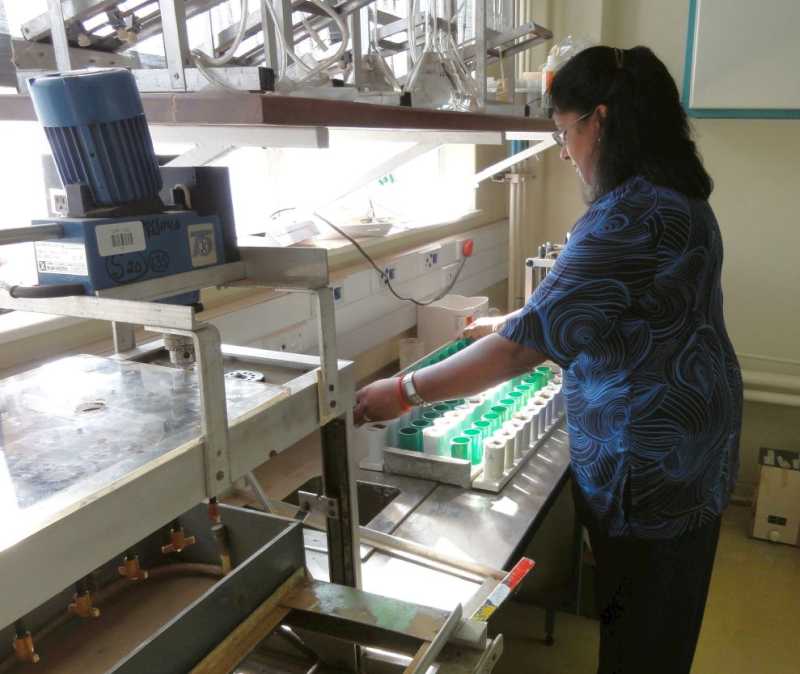
Photo Credit: Alandmanson / Wikimedia Commons / CC BY-SA 4.0
Soil tests are an excellent investment for lawns, gardens, and landscapes. They’re an inexpensive way to maintain soil health and provide an accurate diagnostic. You can get a complete picture of nutrient levels, also known as N-P-K levels (which stands for nitrogen, phosphorus, and potassium). Though these nutrients are always present in your soil, their levels may not be optimal for grass growth.
By having a soil sample tested, you’ll find out:
- Exact nutrient levels
- pH levels (acidic, neutral, or alkaline)
- Salinity levels
- Soil deficiencies that may be hampering growth
- What soil additions are needed
If you’re ready to have your soil tested, we explain the process below.
- A T-shape soil probe is the easiest way to extract soil for testing, especially when it comes to compacted soils or larger areas such as lawns. A garden spade, knife, or hand trowel can also be used in the process, though these tools require more time, effort, and skill. When it comes to lawns, soil should be sampled to a depth of 3 to 4 inches.
- The collected samples should be placed in a clean plastic bucket or box. Never use metal buckets such as aluminum- or zinc-plated, since the metals can influence the test results. Also ensure that organic matter on top of the soil such as mulch or thatch aren’t included in the soil samples.
- To prepare the soil samples for submission, break them up and place them on parchment paper to air dry at room temperature. Once dry, you should be able to crush the soil to the size of wheat grains.
- Mix the samples well and remove roots and other present organic debris.
If you’re ready to give this process a shot, you can take advantage of the services provided by Ohio State University Extension in Licking County. The university will help you fill out the submission form and send the samples to an accredited lab. Depending on the soil test results, you’ll know what your lawn needs to thrive.
6. Overseed for a Lush Lawn
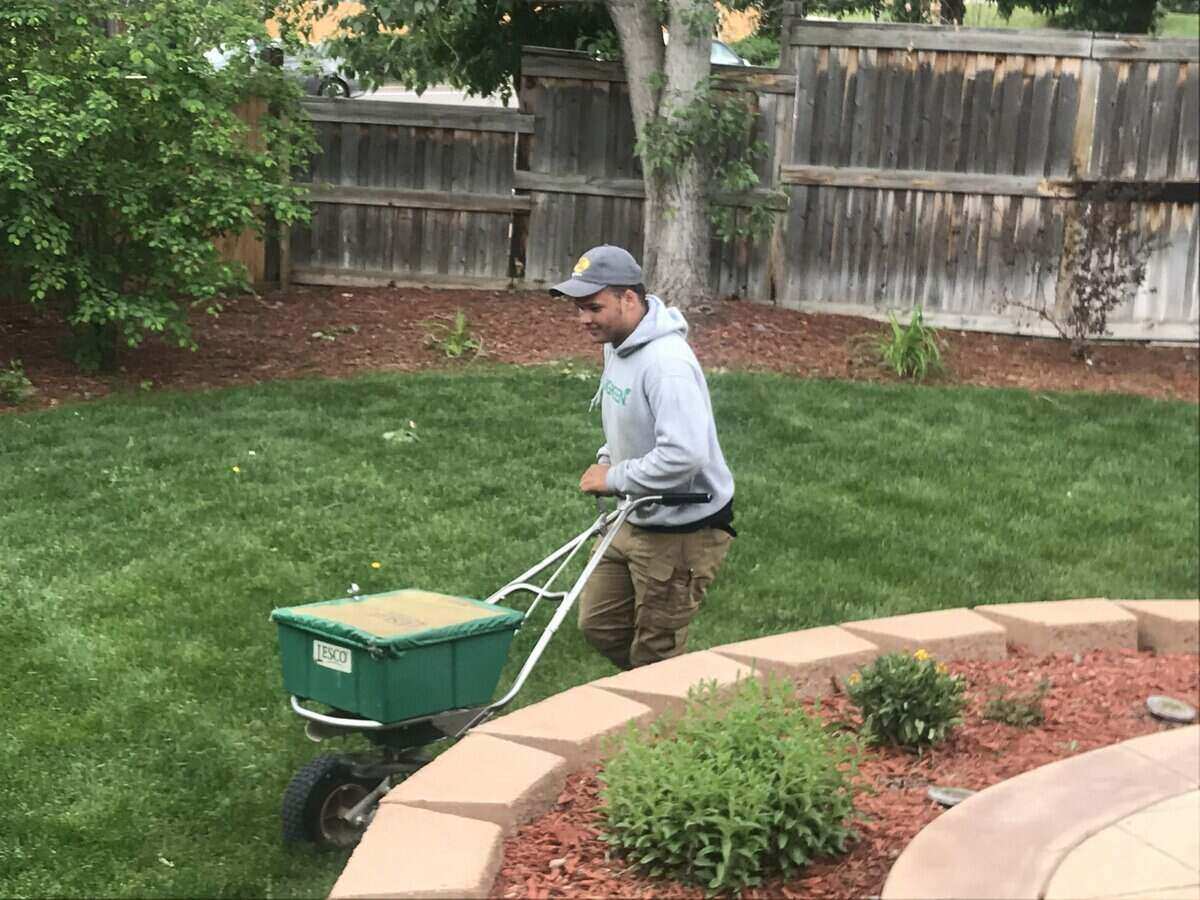
Photo Credit: Brenda Ryan / Wikilawn
When you look out into your yard, the last thing you want to see is brown patches, spots, and weeds. Luckily, overseeding can prevent all of that. It involves adding seed to your existing grass without tearing up the lawn or soil. Simply put, it’s an easy way to fill in bare spots, improve the density of turf, introduce new grass varieties to your lawn, and enhance color.
The best time to overseed in Columbus is mid to late September, prior to the first frost. If you’ve aerated (which is strongly recommended), overseeding should be done within 48 hours to avoid issues such as decomposition of the aeration plugs or debris getting into the holes.
Overseeding can:
- Help your lawn better withstand insects, disease, drought, and heavy traffic
- Reduce the amount of fertilizer, water, and pesticides required
- Lead to a healthier, greener lawn
7. Fertilize to Ensure Growth
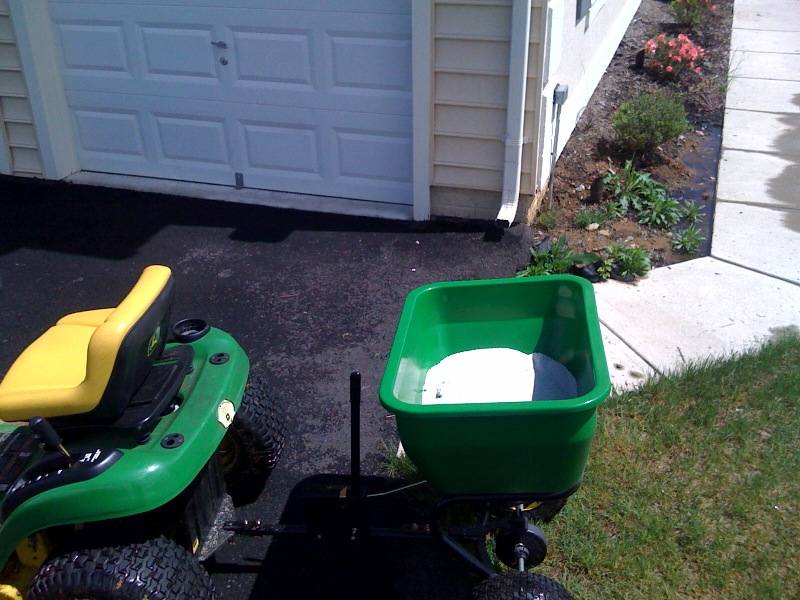
Photo Credit: Dion Hinchcliffe / Flickr / CC BY-SA 2.0
Lawns do a lot more for us than provide a green carpet for our toes to glide through. They improve air quality, reduce heat, and generate oxygen, so keeping them in top shape is important. One of the best ways to do that is to fertilize them.
Choosing the right fertilizer means knowing what your soil’s exact needs are. If you’re unsure, consider taking some soil samples and sending them out to a lab for testing (Ohio State University offers submission support and helpful information). The diagnostic will provide insight into your soil’s current condition and the correct nutrients it needs to flourish.
For maximum winter hardiness, disease resistance, and root growth, select a fertilizer that has high concentrations of the macronutrients nitrogen, phosphorus, and potassium (also known as N-P-K ratio).
Nitrogen is vital for lawn growth and that lovely green grass color. The percentage of nitrogen is always the first number on a fertilizer bag, followed by phosphorus and potassium. It will always be higher than the others because soils generally contain enough phosphorus and potassium.
Pro tip: When it comes to new lawns, you should pick a fertilizer with less nitrogen and more phosphorus and potassium, to get the lawn established. A typical N-P-K ratio in this case is 12-16-8 or 8-18-12.
The second number represents the percentage of phosphorus. This nutrient is critical in developing and strengthening a healthy root system. Strong grass roots will keep your lawn healthy and sturdy even through the changing stresses of the seasons. It’s important to introduce phosphorus when first establishing turfgrass and continue application as the grass grows.
The last macronutrient vitally important to lawn health is potassium. It supports water absorption, respiration, and protein production. In essence, potassium helps lawns withstand drought, stress, and disease.
Fertilizers can be slow-release or quick-release.
Slow-release fertilizers are much better for your lawn, as they promote steady, uniform growth. As an added bonus, you won’t have to fertilize regularly.
Quick-release fertilizers are absorbed at a much faster pace, but there’s a high risk of burning your lawn. Plus, they don’t last as long, so you’ll need to re-apply.
When to fertilize: Plan for two fertilizer applications between late August and November. Summer heat is stressful on our lawns, so fall’s cooler temperatures provide the perfect opportunity for Columbus lawns to regain strength.
Fall is the best time to fertilize because:
- Fall’s morning dew provides the right amount of moisture for grass to absorb fertilizer.
- Your grass can build stamina before winter sets in.
- Root growth in fall leads to a healthier lawn in spring.
The best time of day to apply fertilizer is in the morning or early evening. You’ll avoid the warm daytime temperatures that work against the process.
How to fertilize:
- Read the instructions carefully before starting! Materials change all the time, so don’t assume you already know what your bag of goodies contains.
- Apply fertilizer to moist soil, so wait for rainfall and fertilize the next day. Try to time it so there’s no rain after fertilizing, or else you risk having everything washed away before getting absorbed into the soil.
- Choose the right spreader for your lawn size. Rotary spreaders work best on larger lawns, while drop spreaders should be used on smaller turfs.
- Before starting, make sure you dethatch and aerate to allow maximum nutrient absorption.
- Run the spreader around the perimeter of your lawn first and then go over the rest of it, slightly overlapping each pass.
- Sweep excess that lands on your driveway, sidewalk, or patio.
8. Knock Out Weeds
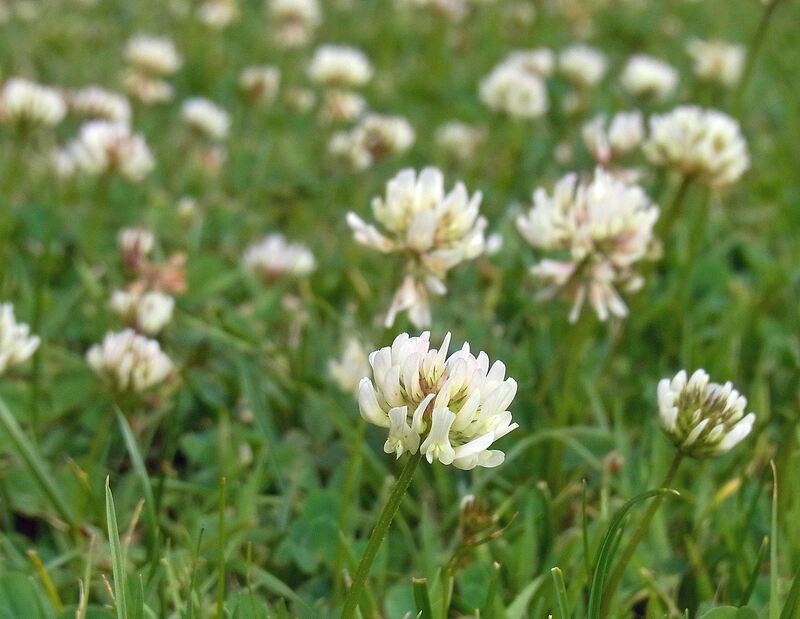
Photo Credit: Lawn Weeds / Wikimedia Commons / CC BY 2.0
Grass grows best in fall, but did you know that weeds do, as well? There are many types of weeds lurking in our yards just waiting for a chance to sow seed. They’re a pain and can cause issues such as allergic reactions.
In Columbus, you’ll likely encounter nuisances such as:
- Ground ivy – Perennial weed with round, glossy leaves that are scalloped around the edges. It forms purplish-blue blossoms that hover above a deeply-veined stem.
- White clover – Perennial easily recognized by its small, white flowers and three-lobed, egg-shaped leaves. It can quickly take over your lawn with runners that spread out and practically smother grass.
- Dandelions – This perennial weed might appear cheery and sunny, but it can quickly turn into a fluffy ball of seeds and cause an explosion across your lawn. Make sure to dig dandelions out before they go to seed.
- Thistle – Like dandelions, dig thistle out before it gets a chance to seed. You’ll recognize this weed by its long, spiky leaves covered in hundreds of tiny spines. Once grown, it forms light purple flowers.
- Crabgrass – This is another weed that spreads via runners. It runs low along the ground from one central root system with broad, flat blades. It produces long flower clusters.
Thankfully, there are a few good ways to combat these annoying plants. While fertilizer generally keeps weeds at bay, it may not be enough. Applying pre-emergent or post-emergent herbicides is a great way to nip the problem in the bud.
What are Pre-Emergent Herbicides?
Pre-emergent herbicide acts by creating a chemical barrier in the top layer of soil and coating the seeds to prevent them from growing roots. Make sure it becomes incorporated into the soil via rainfall or irrigation, as it must be present whenever weed seeds are germinating.
How it works: It inhibits plant root growth, seed cell division, and specific enzymes critical to the growth of certain plants like weeds.
When to apply pre-emergent herbicide: Timing is everything. Try to stick to an early to mid-September application and select the right herbicide for your yard.
What are Post-Emergent Herbicides?
Some weeds will slip past pre-emergent herbicides. In that case, post-emergent herbicide becomes your best friend. It controls weeds that have already germinated and are actively growing.
How it works: It targets specific plant parts, such as leaves and stems. The mixture of chemicals kills the weed and prevents it from growing back.
When to apply post-emergent herbicide: For Columbus cool-season grasses, post-emergents are best applied in early fall when temperatures are at or slightly above 50 degrees Fahrenheit.
Other Types of Herbicides
A non-selective herbicide kills pretty much everything it touches. In contrast, selective herbicide targets specific weed types and leaves other plants alone.
Weed control products are generally available in both granular and liquid forms and application varies. Granular herbicide is poured into a spreader and distributed evenly across the area of the lawn. Liquid herbicide is poured into a sprayer and sprayed all over the target area.
9. Prepare for the Last Mow of the Season
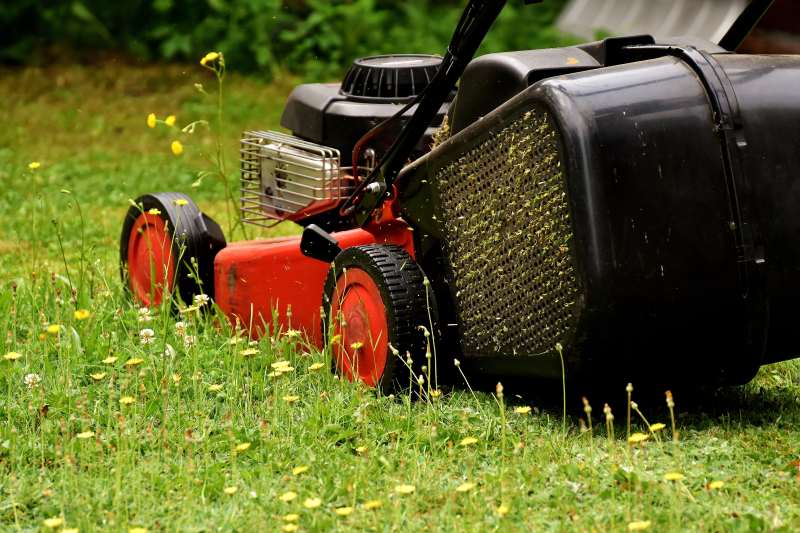
Photo Credit: Wallpaperflare
A good sign that you need to stop mowing is when your grass stops growing. It’s important that your lawn is cut to the right height before winter.
Mow too high and your grass can develop snow mold during wintertime. Grass that’s cut too short may wither and die in the cold temperatures of Columbus.
Once frost has arrived, stop mowing. Frost freezes the moisture inside the grass blades, so any activity on your turf can break the blade and significantly damage your grass.
The table below highlights the mowing height appropriate for Columbus cool-season grasses:
| Grass Type | Suggested Fall Mowing Height |
| Kentucky bluegrass | 2 – 2.5 inches |
| Perennial ryegrass | 2 – 2.5 inches |
| Fine fescue | 2 – 2.5 inches |
| Tall fescue | 2 – 3 inches |
10. Winterize Your Irrigation System
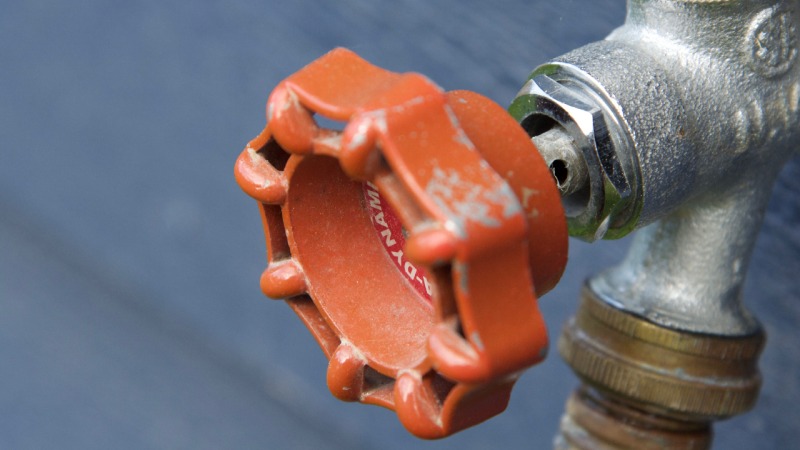
Photo Credit: Wallpaperflare
Unless you properly winterize your irrigation system before winter, you’ll likely end up with cracked pipes and broken sprinkler heads come springtime.
Columbus homeowners are advised to winterize their sprinklers in October or early November, before the first freeze.
The winterization process involves:
- Shutting off the main valve that supplies water to the system.
- Adjusting program controls. Sprinkler systems can have digital readouts or manual dials. Digital systems can be turned to “rain mode” to shut off signals to valves, while manual systems must be turned off completely and reprogrammed in spring.
- Draining the system itself using one of three methods: manual drain, auto drain, or blowout method. The safest route to take is the blow-out method, which uses compressed air to drain irrigation systems. The first two are recommended for more experienced homeowners.
FAQ About Fall Lawn Care in Columbus
It depends on how loose your soil is. Grass seeds should be placed on loose, prepared soil. If you simply throw it down, there may be some sprouting, but generally speaking the germination rate won’t be very successful. Taking the time to get your soil ready will ensure optimal results.
Good lawn care leads to a lush, great-looking lawn. Avoid making the following mistakes:
• Mowing too short. This causes your lawn to thin out and provides space for weeds to push through.
• Bagging your clippings. Contrary to popular belief, clippings don’t increase thatch. They provide around 25% of the fertilizer your lawn needs, so don’t deprive your grass of readily available free nutrients.
• Cutting your grass with dull mower blades. Don’t use dull mower blades to mow your lawn as the mower tears the grass blades rather than cutting them. The damage can leave your lawn susceptible to lawn disease.
Chemical fertilizers are generally a ‘quick fix’ solution. They provide the nutrients grass needs, but pollute our water, soil, and the environment within the soil itself. In contrast, organic fertilizers are made from natural ingredients that produce long-lasting feeding for your lawn, making them a much better alternative.
Hire a Pro to Get Your Yard Ready for Winter
Fall in Columbus is a beautiful sight – the leaves are bright and colorful, the weather is perfect for your favorite sweater, and there are tons of activities to enjoy all week long.
But before you go apple picking and pumpkin patch visiting, get your lawn ready for the long winter ahead. Start planning early to avoid being caught unprepared.
Still, if you’d rather go bike riding in one of the city’s metro parks or explore the Columbus zoo and aquarium, a Columbus lawn care pro can get your lawn ready for the cold season so you can continue doing all the things you love.
Main Photo Credit: The Ohio State University / Dan Keck / Flickr / CC0 1.0

